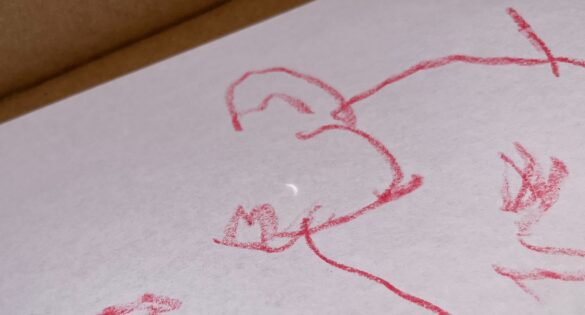In 2011, the psychologist Daniel Kahneman published a book called Thinking, Fast and Slow, in which he distinguishes between two separate pathways in our minds. “System 1” is the fast path, in which the mind quickly synthesizes information and makes decisions without conscious input. With System 1, you can complete the phrase, “in sickness and in _____,” or drive on the route you’ve been taking home for decades. “System 2” is the slow path, in which your conscious processes of logic and calculation are engaged. With System 2, you can write a letter, or decide on the best way to drive from Charlestown to Braintree for an appointment at 4:00pm. (Trick question: No matter when you leave, you will be late.)
Thinking, Fast and Slow is a good book. And it’s a great title. The title came to mind for me this weekend, as I sat through the eighth hour of a special diocesan convention on the day before Pentecost, and saw two different sides of the Holy Spirit: Fast and Slow.
The Holy Spirit is, after all, the mind of the Church. Or at least, it’s the Person of the Trinity to whom we assign most of the processes of discernment and decision-making in the Church, the one for whose intervention we pray when we are in need of guidance.
In the modern Church, we often associate the Holy Spirit with the spontaneous and disruptive, the unexpected and miraculous. “Pentecostalism” is, after all, the tradition of speaking in tongues and miracle cures, whose adherents have believed in sudden outpourings of the Holy Spirit since the Azusa Street Revival and even before. When the Holy Spirit shows up, it’s with a sudden rush of wind and fires lit on people’s heads, with charismatic gifts and remarkable events. Most days, the Holy Spirit seems like a System 1 person of the Trinity.
But the Holy Spirit has a System 2, as well; the Spirit moves in more deliberate ways. Last week, I think, I wrote that the Holy Spirit shapes and guides the Church over generations, smoothing out our liturgies, refining our prayers into words that stand the test of time. It’s certainly true that the Spirit shapes us over the course of our lives; it’s no accident that “spiritual journey” has become such a common phrase, cliché as it may be. (When you’re facing the 93 South of life, where the future seems intractable, the Spirit is certainly there.)
And the Spirit moves in church conventions, too, even as they move at a comically glacial pace. Our election convention was already half an hour behind the agenda by the time the first vote was cast. (45 minutes, it turns out, was not enough time for a Eucharist with 500 people.) Each ballot took a few minutes to cast a vote, followed by twenty minutes of counting, then a few minutes to announce the results of that ballot, followed by another twenty minutes for the candidates to decide if they want to drop out before the next one, round after round of electronic voting, each of which was theoretically instant but which took forty-five minutes nevertheless.
But sometimes, the Spirit can’t do its work without some delays. Those forty-minute breaks were essential to the process. The hour we took for lunch between ballots 2 and 3 was absolutely necessary. Taking the time to reflect, and pray, and wait in a beautiful church between rounds of voting transformed what could’ve been a process of political scheming into a holy time of discernment. Sometimes, parliamentary procedure and Robert’s Rules can stifle the movement of the Holy Spirit—but sometimes all that structure and rigamarole slows things down just enough, gives just enough space, for the Spirit to help us work.
The Spirit can move fast, when it wants to, shattering our preconceptions and overturning the world in a matter of minutes. But mostly it moves slow, in our conventions and in our lives, gradually reshaping and redirecting us. The Spirit is not only fire, but wind; not only sudden transformation that burns down everything, but a gentle breeze that slowly takes us where we need to go.

